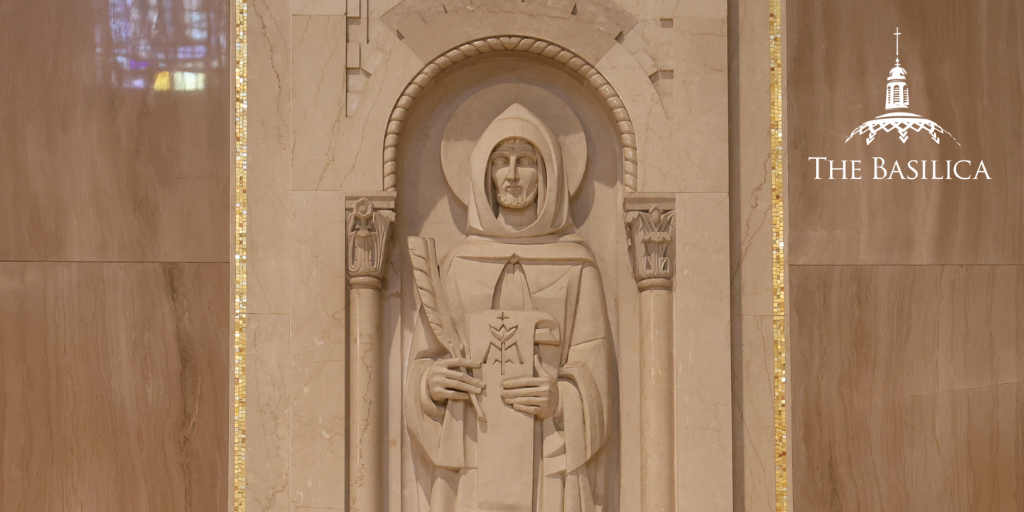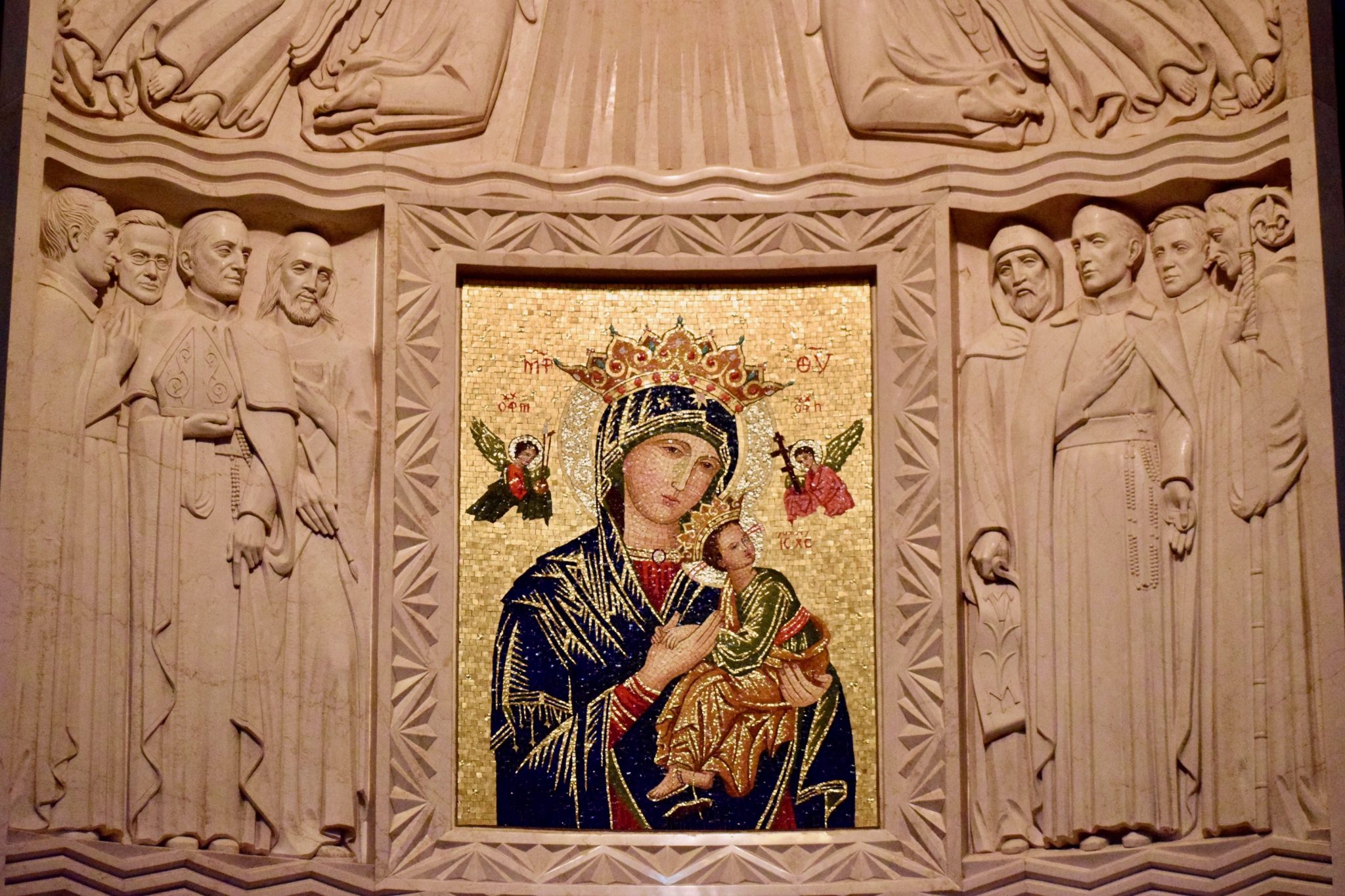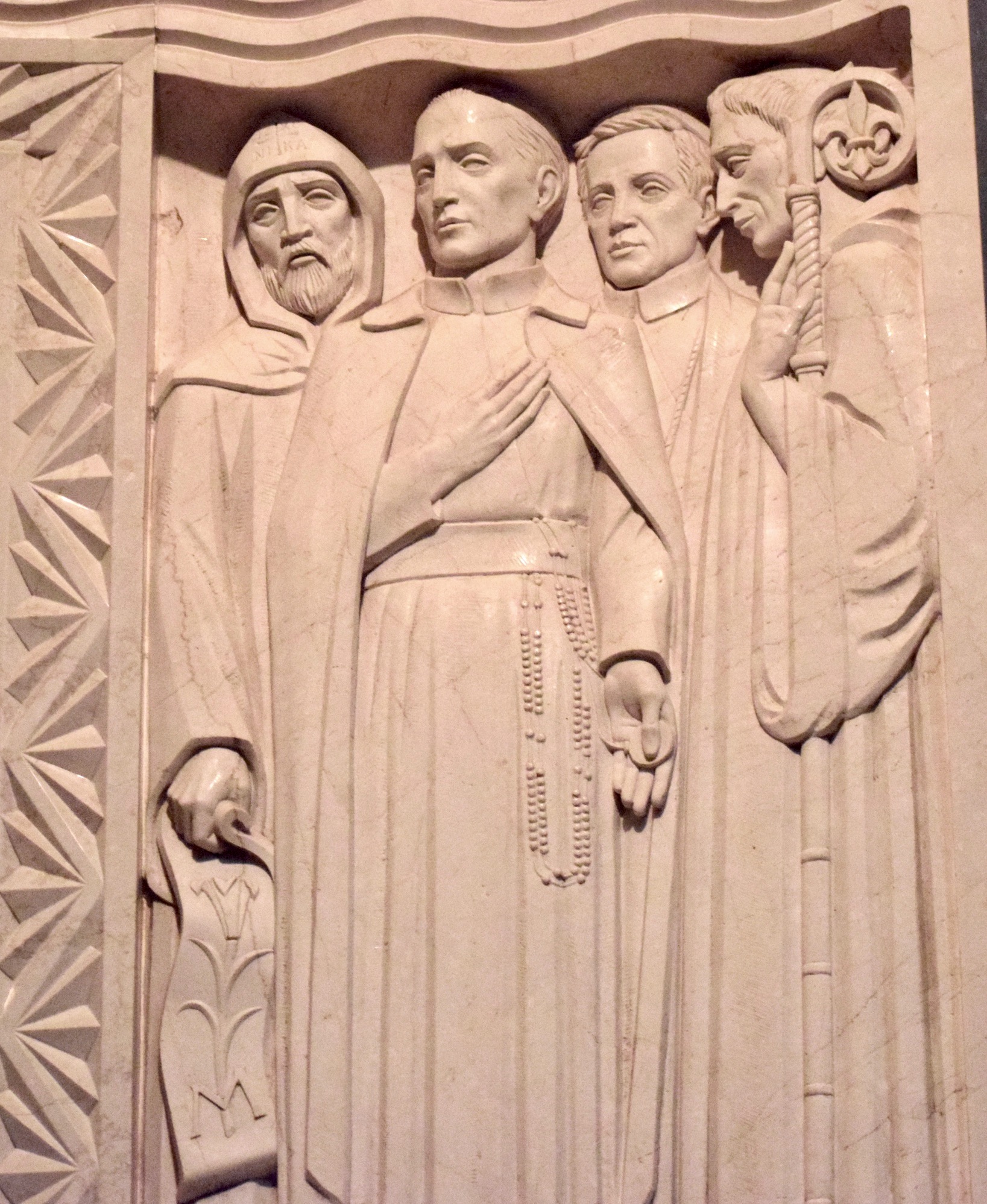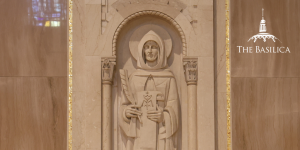
“Beautiful and good music is a privileged tool for approaching the transcendent,
and often helps even those who are distracted to understand a message.” – Pope Francis
Over the course of history, music has played a significant role in the Church, helping the faithful draw closer to God as they reflect on the lilting melodies and lyrics. But there’s one saint in particular who changed the Church’s approach to sacred music by using it not just for worship, but for teaching: St. Ephrem.
As we observe the anniversary of St. Ephrem’s death this week, we invite you to learn more about his life and legacy, and discover where he is portrayed in the Basilica.
Early Life and Teaching

While few details can be found concerning Ephrem’s early life, historians believe he was born around 306 A.D. in Nisibis, Mesopotamia, to Christian parents. Ephrem was fortunate enough to receive an education, and when he reached adulthood, he chose to be baptized. Inspired to share his knowledge with others, he partnered with the Bishop of Nisibis to start a theological school in their city. Some accounts state that after teaching, he spent a period of time as a hermit, occasionally working as a sailmaker in order to support himself.
When Ephrem was nearly 60 years old, Persia gained control of Nisibis after engaging in a series of conflicts with Rome. Christians were being cast out of the city, so Ephrem fled east to Edessa. There, he resumed teaching at another biblical school, and was later ordained as a deacon. One account states that he had so little desire to pursue the priesthood that he pretended to be of unsound mind.
Becoming the “Harp of the Holy Spirit”
During his time as a deacon, Ephrem distinguished himself as an articulate orator and percipient author. In his work, he often discussed the humanity of Jesus and the mystery of the redemption story. Some historians believe that his insightful writings on the Last Judgment served as a source of inspiration to the Italian philosopher Dante over 900 years later.
In addition to his sundry biblical commentaries and theological poetry, Ephrem’s greatest contribution to the Church was his hymn-writing. Seeking to combat heretical doctrine that had wormed its way into the Church’s music, Ephrem used the melodies of the flawed songs for his own hymns, writing new, theologically sound lyrics to replace the incorrect ones. He was one of the first Catholic leaders to realize the significance of utilizing music as a tool for teaching spiritual truths – a conviction that earned him the moniker “the Harp of the Holy Spirit.”
Ihidaya: the Final Years
Near the end of his life, Ephrem sought solitude once more, choosing to live as one of the “ihidaya,” one who is “single and [a] single-minded [follower] of Christ,” this time, in a mountain cave near Edessa, where he could better write and pray.

However, God was not done using Ephrem to serve others. When the citizens of Edessa began to suffer from the plague and famine in 372, he returned to assist in the relief efforts. Because of his upright character, the people of the town trusted him to organize the even distribution of food. He also attended to those afflicted by the plague, and eventually succumbed to disease himself on approximately June 9, 373.
One account states that as he lay dying, he recalled a vision he had as a child, symbolizing the work God would have for him:
“There grew a vine-shoot on my tongue: and increased [sic] and reached unto heaven, And it yielded fruit without measure: leaves likewise without number. It spread, it stretched wide, it bore fruit: all creation drew near, And the more they were that gathered: the more its clusters abounded. These clusters were the Homilies; and these leaves the Hymns. God was the giver of them: glory to Him for His grace! For He gave to me of His good pleasure: from the storehouse of His treasures.”
In 1920, Saint Ephrem became the first Syriac Christian to be declared a Doctor of the Church. Today, you can find him portrayed at the Basilica in the Our Mother of Perpetual Help Chapel and in the West Chancel Bay.
Sources:
“Benedict XVI, General Audience, Wednesday, 28 November, 2007,” The Vatican.
Rohling, Geraldine M., PhD, MAEd. The Basilica of the National Shrine of the Immaculate Conception: Guide and Tour Book. Washington, D.C.: Basilica of the National Shrine of the Immaculate Conception, 2018.
“Saint Ephrem,” Franciscan Media.
“St. Ephrem,” Catholic.org.
“St. Ephrem,” Catholic News Agency.

